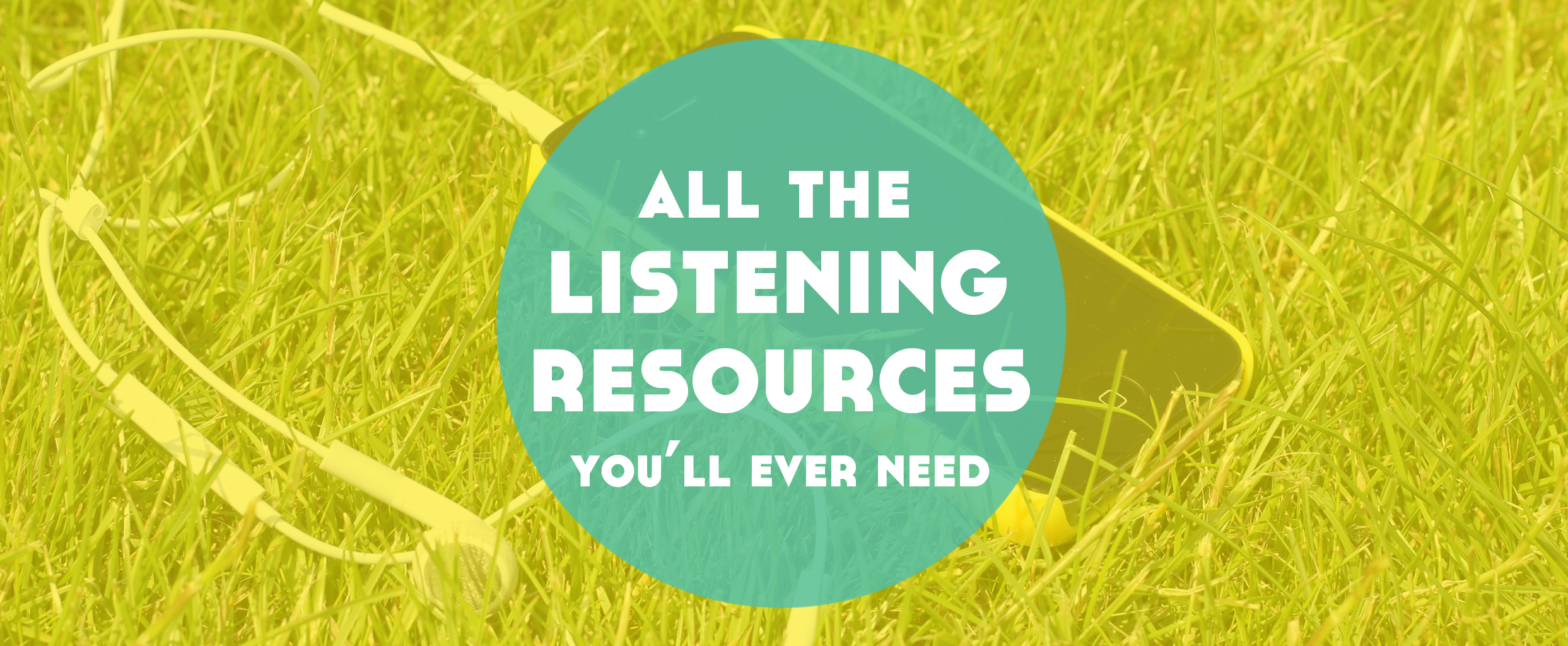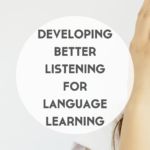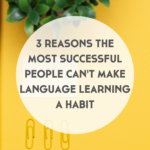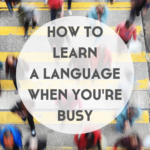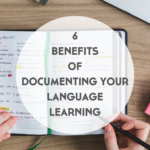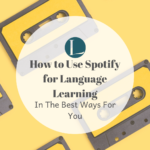The thing most people care about with language learning is being able to speak. But speaking with others is 50% listening. So with that in mind, here’s all the listening resources for language learning that you’ll ever need.
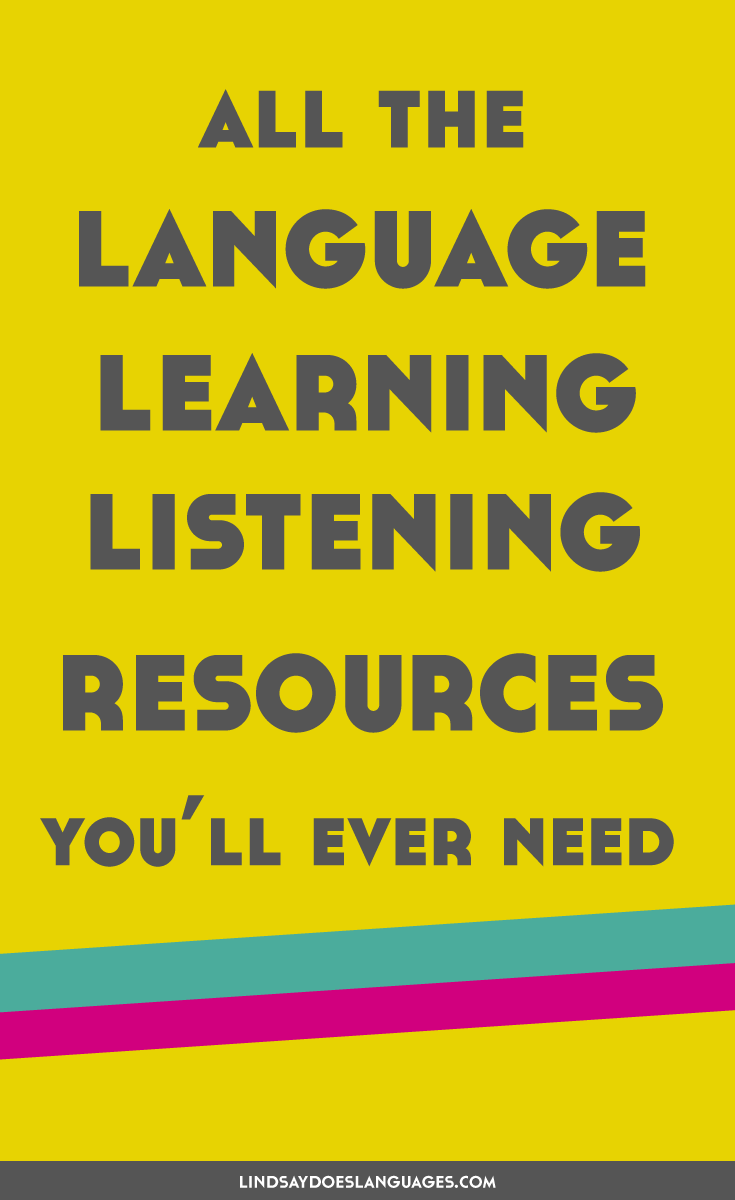
Before we get into the resources, I want to share a few key tips for improving your listening and listening confidence.
Get the right mix
There’s plenty of things out there that you could be listening to. But just one or the other will only improve that one aspect.
For example, if you listen to the language all day but you’re only listening to music, that’s not going to be enough to help you understand spoken conversations.
And if all your listening is passive, then you won’t be too good at the active stuff.
So you need to get the right mix between what you’re listening to and how you’re listening.
Change your current listening habits
Do you have a hella dull commute each day to work or school? Listen to something in the language you’re learning. It could be anything from music to podcast to language learning course (I’ll share some specific ideas below!).
Either way, changing your current listening habits is a great way to add in some listening for language learning.
Make sure you enjoy it
There’s no point listening to anything (or doing anything) in the language you’re learning if it’s a drag and it’s boring and you hate it.
It’s so important that you enjoy what you’re doing and that you enjoy what you’re listening to.
Big up your active listening
It’s much easier to bring in some passive listening. However, making the most of your active learning time can take a little more work.
Start by thinking about the process of listening. What do you do to prepare before, during and after listening actively? How can you take things further?
We talk about this in more detail in the Listening Unit in Successful Self-Study. Click here to join the course and learn more about this.
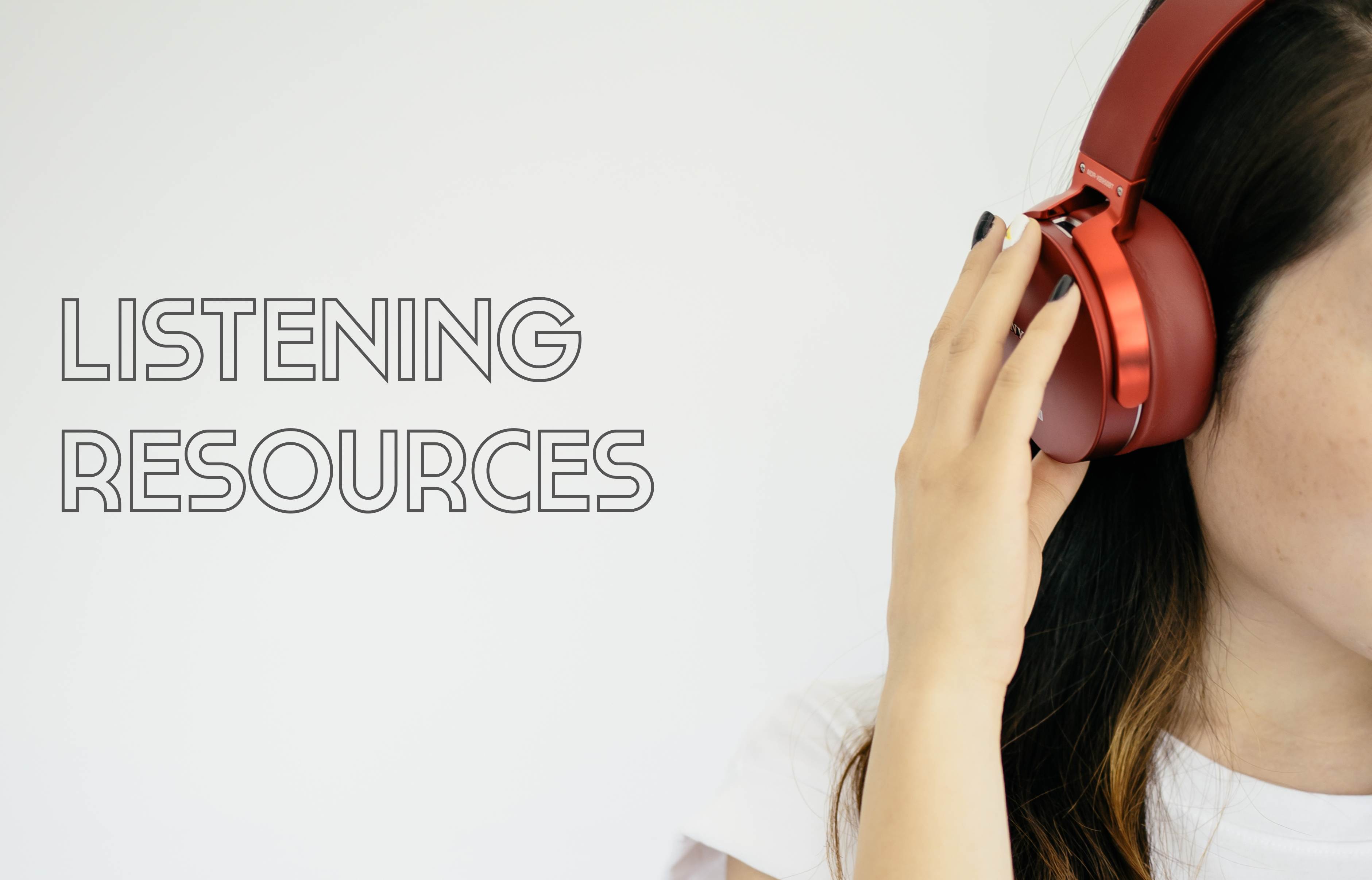
There’s two main groups of listening resources: those made for language learners and those made for natives. There can at times be some crossover, but for the purpose of organising these resources, we’ll stick with two groups.
Made for Language Learners
Podcasts
Many podcasts are out there that are designed for language learners. The hardest thing will likely be finding one that suits your level – especially if you’re beyond beginner. But once you’ve got it + it works for you, stick with it rather than searching around constantly for something new.
This post is a great place to start and details plenty of podcasts for so. many. languages.
The Survival Phrases series is a good starting point if you’re new to a language or learning for travel, and the LanguagePod/Class101 series are great to take things further with a solid library of audio-based lessons for any level.
If you’re curious about how to use these in your everyday life, here’s what I did using JapanesePod101 when I was learning Japanese.
Hellotalk
Maybe you’re reading this thinking, “Hang about! HelloTalk is great for speaking + writing…what are you talking about listening?!”
Well, think about this: if you’re exchanging audio messages with someone, half of what you’re doing there is listening. As well as practising your speaking skills, you also get to up your listening too. Bonus.
And the great thing about this is that it’s often spontaneuously spoken stuff without video, like a phone call – one of the more difficult things to master when it comes to listening.
Glossika
Another great cross-over tool, Glossika is excellent for getting familiar with the sound of a language and boosting your listening skills.
Glossika late 2017/early 2018 changed to a monthly plan that includes ALL the languages. Say whaaat?! Yup.
And there’s plenty of ways you can play with this as a multi-purpose resource. Check out this post to find out 12 of my favourite ways.
YouTube
There’s so many great language lessons on YouTube, in more languages than you might imagine. And, of course, because these have audio, they make for excellent listening resources.
One great channel to start you off is Easy Languages, which consists of interviews in the street in many languages. German is the language updated most frequently, however this stuff doesn’t go out of date so it’s great for any language they have!
There’s plenty of channels I could include here but Innovative Languages (Pod/Class101) has a great range of videos to get you started with lots of languages.
FluentU
To make the most of YouTube and enjoy things that you might not be able to understand, try FluentU.
This tool creates quizzes and activities based on YouTube videos – videos that without a little assistance may not be accessible if you’re in the early stages of a language. Take a look at my review of FluentU here.
Colloquial
For some free language learner audio, head over to Colloquial for (take a deep breath) free downloadable audio of their courses. Yup. Simply click the language you’re interested in for access to download the free audio.
For some of the activities, it does of course help if you have a copy of the book too, but with the dialogues, they can be a great stand-alone resource.
Listening Practice
If you’re after a quick minute or two of practice (or a binge to replace even the best Netflix binge) then Listening Practice is for you.
There’s audio taken from Tatoeba and other places across the web that you then use to test your understanding. It’s all good fun!
Lyrics Activities
There’s a few similar sites here so I’m bunging them under one title to make things simple.
Lyrics Gaps and Lyrics Training both do a similar thing (in some cases for different languages) by creating cloze (gap-fill) exercises from lyrics to famous songs (or not so famous – great way to find new music in the language you’re learning!)
Made for Natives
Podcasts
So we’ve already tocuhed on podcasts designed for language learners, but it’s also worth including some podcasts created for natives in your feed too.
From news to comedy to storytelling, there’s plenty out there. Again, check this post for a comprehensive list.
Subtitles
There are plenty of ways to use film and TV as a listening resource for your language learning. Subtitles are just one of them.
Whether it’s Netflix, Amazon Prime, DVDs, YouTube or videos (I’m sure you’re still out there VHS-watcher) subtitles can be a great addition to boost your listening.
What’s great about using subtitles alongside listening to something you watch is that you can play with it at various levels. For example, you can start by watching something with audio in the language you’re learning and subtitles in your native language (inter-lingual subtitles), advance onto watching with subtitles and audio in the language you’re learning (intra-lingual subtitles), before moving on to watching something without subtitles at all…but of course with audio in the language you’re learning!
A great tool to support subtitles with Netflix is Lingvo.tv. This is a Chrome extension that connects to your phone and displays the subtitles on your phone as you watch making them clickable and instantly translatable.
The words you click are then saved so you can see the full list of new stuff you learnt to take and learn as you wish. Woop!
To learn more about how to use and eventually break free from subtitles, check out Leo Listening. Cara Leopold knows her stuff on this topic!
And for more tips of using subtitles, check out this video: 5 Tips for Using Subtitles for Language Learning.
Music
There’s plenty of places you can find music on and offline in other languages. You can get really active with it (such as using lyrics like suggested above) or keep it passive as a way to connect to the culture associated with the language a little more.
Spotify is a great place to start. To learn more about how to use Spotify for language learning, check out this blog post on just that topic.
The #WeDoLanguages Facebook Group even works together each month to compile the best of non-English music. Take a look at our playlist here and click here to join the group if you’re not already with us.
I’ve also compiled a few blog posts previously of some of my favourite musicians in different languages:
5 Ways to Use Music to Learn Korean
The Best British Music for English Students (and what to do with it)
When Taylor Swift Met Japanese Music.
10 Essential French Musicians to Help You Learn French
10 Essential Spanish Musicians to Help You Learn Spanish
Finding New Foreign Language Music
Youtube
YouTube is a great resource for listening, not only for channels designed specifically for learners but also for native content.
You can find almost anything – from music to film trailers, vloggers to recipes, helpful explanations to fun and silly videos.
The easiest way to find native content over stuff designed for learners is to search using keywords in the language you’re learning. For example, try searching ‘receta de postre’ instead of ‘desert recipe in Spanish’.
I’ve previously compiled a couple of blog posts that will help you here if you’re learning Spanish or French:
10 Essential Spanish YouTubers to Help You Learn Spanish
10 Génial French YouTubers to Help You Learn French
Librivox
Librivox is a great site compiling audiobooks recorded by volunteers in many languages.
The website even allows you to search by language, which is pretty handy for our situation!
Spanish Con Salsa!
If you want to use music to learn more Spanish, then Spanish Con Salsa is for you! Tamara has created such a good course for Spanish learners to bring a little fun into their learning. Check it out here. (That’s my affiliate link because I love Tamara’s work!)

